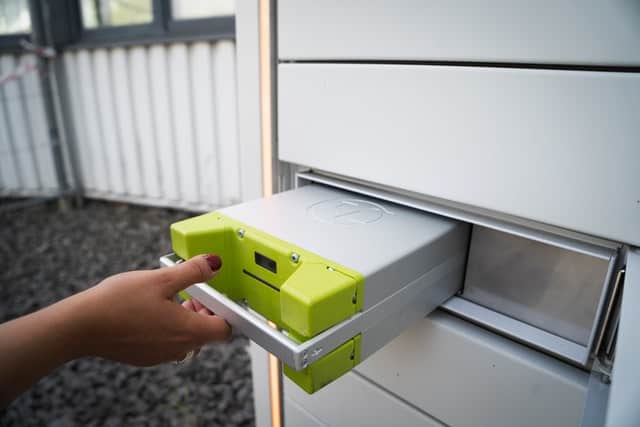
When choosing a solar battery, there are various essential things to consider such as the battery’s lifespan, cost, how much power each battery can provide etc. There are multiple models of batteries which can store solar energy, all with advantages and disadvantages. The best ones for storage applications are recognized as the safest to use by the NEC 2020.
Here below are the most trusted batteries currently available in the market for solar storage purposes.
Nickel Based Battery
Nickel-based batteries are used on a large scale for energy storage purposes because their characters perform well in all kinds of temperatures. Nickel-Cadmium (NiCd) is the most common technique used. Nickel-based batteries have been used in large-scale energy storage projects as they perform well in all types of temperatures. Nickel-Cadmium (NiCd) is the most common Nickel-based battery technology used with the lowest cost than the other batteries. They are more appropriate for off-framework establishment as they have a dependable reinforcement framework and don’t need regular maintenance, yet the absence of support will lessen their cycle checks. They don’t require ventilation or cooling and have a long life cycle. They are available in a wide range of sizes and performances and even can be stored in a discharged state because of their long shelf life. Moreover, Cadmium used in these batteries is a toxic metal that makes the battery types less user-friendly and leads to lead-acid batteries.
Lead Acid
Lead batteries are renowned for decades. Either they are the bulky ones but are still rapidly being eclipsed by other technologies with more extended guarantees or lower prices as solar battery storage becomes more popular. They have a low self-discharge rate among the presented rechargeable batteries. They have the specific power and are well capable of the high discharge of current among many others, but it charges slowly (14+ hours) among the others and has a low specific energy. The lead batteries are not so eco-friendly, and in case if they are not discarded properly, they can contaminate the environment. That can result in a threat to human health and nature as they contain sulfuric acid and lead that are dangerous elements. So that’s why these batteries are heavy because of their materials.
Lithium-Ion
The lithium ions are gathering more repute after evolving electric car industry development both in technology and cost. There are two kinds of lithium-ion batteries that exist and are used for large-scale solar battery storage applications: Lithium Manganese Oxide (LMO) is a fast charging but can only enter the C&I market. The Lithium Nickel Manganese Cobalt Oxide (NMC) is high energy-specific and stable but relatively new. Lithium Iron Phosphate (LFP) has a long life cycle with no requirements for ventilation or cooling. At the same time, these batteries have high energy thickness and a somewhat low self-release. They don’t require delayed preparation when new, and one charge is adequate. Lithium-particle batteries are overall poor support, and an occasional release isn’t needed. Anyway, the vast majority of them are still similarly costly to fabricate and are liable to maturing, even while not being utilized and transportation limitations. They likewise require an insurance circuit to keep up voltage and current inside limits.
Flow
They are the new entrants to the battery storage technology family, and even the technology has been used for years. They are known as flow batteries because of the water-based solution of zinc-bromide inside them. They have more prominent plan adaptability, permitting more blend between capacity limit and force yield limit. These Redox flow batteries (RFB) have high flexible energy storage technology and low energy density and less expensive. The Hybrid flow battery has a high storage technology with common charge and discharge rates and less costly. Rather than adding more batteries to a storage system to build its ability, stream batteries need more electrolyte fluid. This electrolyte can be recharged whenever without intruding on power yield. The electrochemical cell can convey power as long as the electrolyte arrangement is accessible.
Wrapping Up!
Settling on the battery innovation will affect the entire power system use and life span. As we have seen, lead-acid batteries are more dependable and have been utilized for quite a long time. Yet, they are not as adaptable or practical as the other batteries appeared previously. It is unquestionably challenging to pick battery storage or the correct EMS that will work with it. After selecting the battery type, one needs to appropriately estimate their battery fleet and track down a viable EMS for choosing a battery based on your demand.

